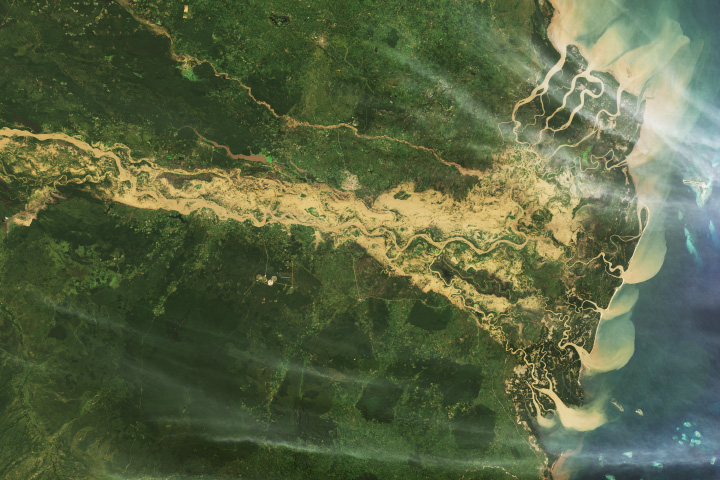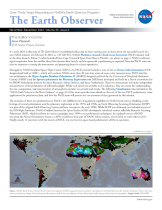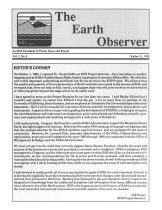- Home
- Missions
- Data
- Communications
- People
- The Earth Observer Newsletter




Recent Imagery
You will be directed to the NASA Visible Earth webpage when you select Images by Mission below, or click on the images at right that are randomly generated to represent four out of all possible topics.
The Earth Observer: Oct - Oct, 1990
In This Issue
Click title below to view page
no ToC exists; need to manually enter
Editor's Corner
Jeff Dozier, EOS Project Scientist
On October 1, 1990, I replaced Dr. Gerald Soffen as EOS Project Scientist. Jerry has taken on another important job at NASA Goddard Space Flight Center, heading the University Affairs office. We wish him well in this important undertaking and thank him for his service to the EOS Project. We all know that the quality and quantity of futute generations of Earth scientists are crucial to the success of EOS, and we expect that Jerry can help us find, recruit, and support those who will carry on when we have retired or otherwise grown beyond the stage where we do useful work.
I have agreed to serve as the Project Scjentist for not less than two years. l told Shelby Tilford that I wouldn't quit earlier, no matter how difficult I find the job. I am on leave from triy position at the University of California, Santa Barbara, and am employed at Goddard by the Universities Space Research Association. Here I will try to guide the interaction between scientific investigations, data systems, and instruments. I expect to have a major role in guiding the development of EOSDIS, in helping to integrate the interdisciplinary and instrument investigations, and in articulating and defending scientific questions and measurement and modeling strategies for a wide array of disciplines.
I will need your help. Congress, the President, and the NASA Administrator support the Mission to Planet Earth, but tight budgets will continue. Before the November IWG meeting, for example, we had expected that the payload selection for the EOS-A platform would be known, and we apologize for the state of uncertainty. However, Dr. Lennard Fisk, Associate Administrator of the Office of Space Science and Applications, must wait until budgets for the years 1992 through 1996 are negotiated with the Office of Management & Budget and the NASA Administrator.
We must not get into the mold that currently plagues Space Station Freedom, whereby the scope and purpose of the mission are continually questioned, reviewed, and re-budgeted. EOS investigators, EOS management, Congress, and the Administration must agree on what EOS should be, on the priorities for instruments, on the recommendations for the A-series and B-series payloads, and then establish a reasonable schedule and funding profile. During the next three months, we will work to provide each EOS investigator with a likely funding profile from which we can negotiate the scope of work during the next decade.
I look forward to working with all of you to accomplish the goals of EOS, the most important of which is to develop the capability to predict or assess plausible environmental changes, both natural and human-induced, that will occur in the future. Meeting this challenge for the next decade to century requires the integration of knowledge from the traditional disciplines and infomation from many different sources into a coherent view of the Earth system. EOS is the largest project in the history of NASA and arguably the most important national and international scientific mission of the next two decades.
Read more...

